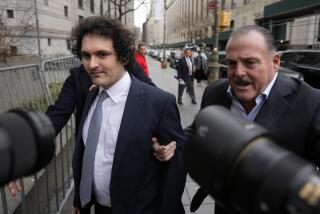What Was Lost in the Crash Wasn’t Real
- Share via
Because I am not an accountant, an investment analyst or a well-to-do owner of stock, my understanding of what “really” happened on Oct. 19 may be seriously flawed. From my limited vantage point, however, both columnist James Flanigan (“Wall Street’s Disaster Was All Too Real,” Dec. 13) and letter writer Jeremy Stone (“CPAs Will Tell You That Money Wasn’t Lost in the Crash, It Just Changed Hands,” Dec. 27) seem unaware that the $500-billion “loss” in “value” of common stocks was no more real than the missing payoff in any other pyramid-like scheme.
Flanigan errs in believing that the events of Oct. 19 destroyed $500 billion in value from the stock market, and Stone errs in believing that the $500 billion just changed owners. The $500 billion, or at least a large part of it, never existed and never could. It was a measure of the expectant hope that propels shareholders to pay far more than a reasonable price for shares of corporations in the expectation of selling later to someone else whose hope is just a bit stronger.
While there is nothing intrinsically wrong with this game, the penalties can be severe for players who do not understand it for what it is.
DAVID COHEN
Bakersfield


